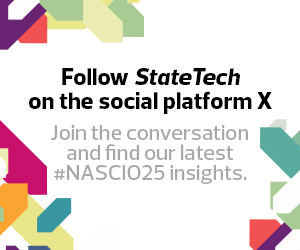State Transportation Agency Assesses Traffic Safety With GenAI
After Gov. Gavin Newsom issued an executive order to guide AI adoption, the California Department of Technology established a secure sandbox and began testing 10 proofs of concept for GenAI solutions, said California CTO Jonathan Porat. Those proofs of concept were “deliberate and intentional” applications of GenAI.
“We’ve seen a lot of governments — state, national and international — take kind of extreme positions when it comes to GenAI as a new technology,” Porat said. Some decided to wait until industry agreed on the best applications; others went full steam ahead and see what they could do.
“It was really cool to see that our state took an approach in the middle, where we said, ‘What is it that we want to get out of this technology first, and what are those risks or negative policy outcomes that we want to try to prevent or mitigate if we can’t do anything else?’“ Porat said.
Built in the state’s private sandbox, the proofs of concept included initiatives such as analyzing large data sets, providing translation services, helping contact center employees, digitizing paper records, and combining and referencing different types of policies, among others. One particularly successful effort involved improving traffic management and highway safety.
“We worked with the California Department of Transportation to see how AI can help manage traffic and improve safety for the road users,” Porat said. “But one thing that was really exciting to see as we went through that project was we could keep adding more dimensions to the data. We care about how AI is going to affect our equity goals and our broader service delivery goals. And so, when you’re using an AI tool to manage traffic, there’s some important questions you need to ask around equity and say, ‘Who is the model optimizing traffic for? What are the implications going to be on different groups that are out there?’ And it was great to be able to bring those questions up and be able to add more data in so that we could have more sophisticated answers.”
In an April 29 press release, California touted the roadway safety progress made with GenAI. Caltrans sought “to process and interpret complex data to improve its traffic pattern analysis, address bottlenecks, and enhance overall traffic management,” according to the press release. Caltrans tamed with Microsoft to use Azure OpenAI to analyze transportation scenarios in support of reducing traffic congestion, improving incident response and boosting transit reliability. It plans to implement its AI-guided plan soon.
Click the banner below to learn more about how AI solutions can empower digital transformation.













